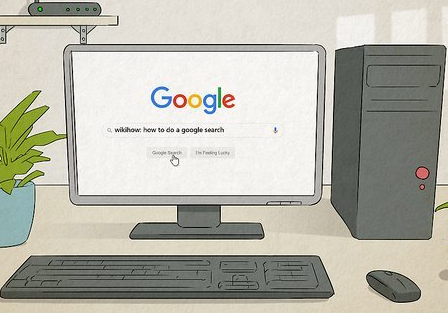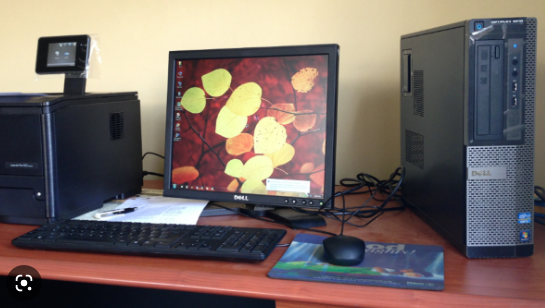Title: The Evolution of Computers: From Abacus to Quantum Computing
Computers have come a long way since the invention of the abacus in ancient times. Today, we have sophisticated machines that can process vast amounts of data and perform complex tasks in a matter of seconds. In this article, we will take a look at the evolution of computers and how they have revolutionized our lives.

Feature 1: Abacus
The abacus, invented in ancient China around 300 BC, was the first device used for arithmetic calculations. It was made of a wooden frame with beads that could be moved up and down on rods to represent numbers. The abacus was widely used for centuries and is still used today in some parts of the world.
Feature 2: Mechanical Calculators
In the 17th century, mechanical calculators were invented that could perform addition, subtraction, multiplication, and division. These machines used gears, levers, and other mechanical components to perform calculations.
Feature 3: Electronic Computers
The first electronic computer was the Electronic Numerical Integrator and Computer (ENIAC), built in the United States in 1946. It was a massive machine that weighed 27 tons and took up an entire room. The ENIAC could perform 5,000 additions or subtractions per second and was used for military calculations.
Feature 4: Transistors and Integrated Circuits
In the 1950s, the invention of the transistor revolutionized electronics. Transistors were smaller, faster, and more reliable than the vacuum tubes used in early electronic computers. This led to the development of integrated circuits, which allowed for the creation of smaller and more powerful computers.

Feature 5: Personal Computers
The first personal computer was the Altair 8800, released in 1975. It was a kit that users had to assemble themselves and had limited capabilities. However, it sparked a revolution in computing, and soon after, companies like Apple and Microsoft began developing personal computers that were easy to use and had a wide range of capabilities.
Feature 6: Mobile Devices
The invention of the smartphone in the early 2000s changed the way we interact with computers. Today, we have smartphones and tablets that are more powerful than some of the earliest computers. These devices have become essential tools for communication, entertainment, and productivity.
Feature 7: Quantum Computing
The latest development in computing is quantum computing, which uses quantum mechanics to perform calculations. Quantum computers can solve problems that traditional computers cannot, such as breaking encryption codes and simulating complex chemical reactions. While still in the experimental stage, quantum computing has the potential to revolutionize computing once again.

Conclusion
In conclusion, the evolution of computers has been a remarkable journey that has transformed the way we live, work, and communicate. From the abacus to quantum computing, each new development has brought new possibilities and challenges. It will be interesting to see where the future of computing takes us.
FAQs
What is a computer?
A computer is an electronic device that can accept, store, process, and retrieve data. It consists of hardware components, such as the central processing unit (CPU), memory, storage devices, input/output devices, and software that enables it to perform various tasks.
What is the CPU?
The CPU, or Central Processing Unit, is the brain of the computer. It is responsible for executing instructions and performing calculations. It is also known as the microprocessor and is usually the most critical component of a computer system.
What is RAM?
RAM, or Random Access Memory, is a type of computer memory that allows the CPU to access data quickly. It is volatile, meaning that it loses its contents when the power is turned off. It is used to temporarily store data and program code while the computer is running.
What is storage?
Storage refers to the computer’s ability to save data permanently. It includes hard disk drives, solid-state drives, and other storage media. Storage devices are used to store data, such as documents, music, videos, and other files.
What is an operating system?
An operating system is a software program that manages computer hardware and software resources and provides common services for computer programs. It is the interface between the user and the computer and allows the user to run applications and perform tasks.
What is a motherboard?
A motherboard is the main circuit board of a computer. It is the central hub that connects all the other components of the computer, including the CPU, RAM, storage, and input/output devices.
What is a peripheral device?
A peripheral device is any device that connects to a computer and is used to input or output data. Examples of peripheral devices include keyboards, mice, printers, scanners, and external hard drives.
What is a virus?
A virus is a malicious software program that can replicate itself and spread from one computer to another. It can cause damage to computer systems, steal data, and interfere with normal computer operations.
What is the Internet?
The Internet is a global network of computers and servers that are connected to each other. It allows people to access information, communicate, and share data across the world.
What is cloud computing?
Cloud computing refers to the delivery of computing services, including servers, storage, databases, and software, over the Internet. It allows users to access these resources from anywhere in the world, using any device with an internet connection.
